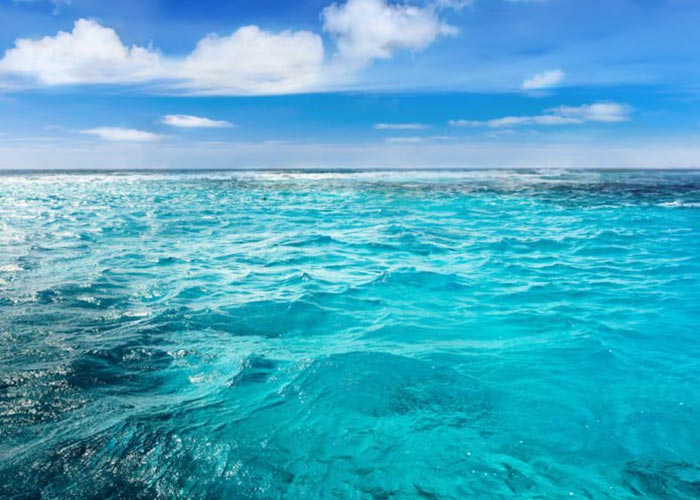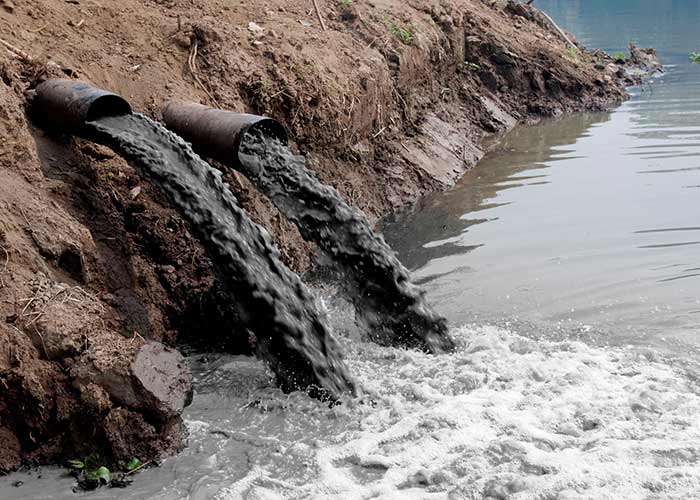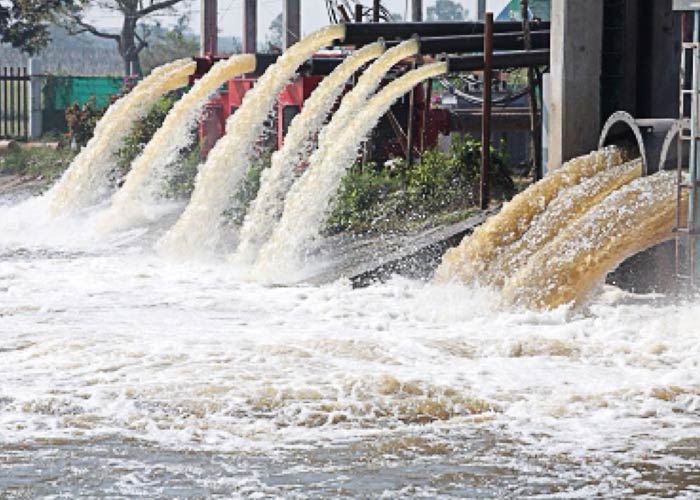Oceans cover more than two-third of the earth’s surface. They play a very important role in maintaining the biodiversity and providing livelihood for thousands of people.
What is Ocean Acidification (Meaning)
When carbon dioxide is absorbed by seawater certain chemical reactions occur that reduce pH – a figure expressing the acidity or alkalinity of a solution – of seawater to become more acidic resulting in the saturation states of biologically important calcium carbonate minerals. These chemical reactions that occur in the ocean water are known as Ocean Acidification or OA. In fact, these chemical reactions make some negative changes in the chemical make-up of all over ocean water as well as water temperature, resulting in excess carbon dioxide accumulated in the atmosphere.
Some Interesting Facts about Ocean Acidification
It is well known that atmosphere is made up of air and air is composed of many gasses including Oxygen, Nitrogen, Argon and Carbon Dioxide. All these gasses occur naturally in the atmosphere. Natural forest covers are large absorbers of carbon dioxide from the atmosphere but the oceans are the largest carbon sinks on the planet.
Ocean acidification occurs due to changes taking place in the chemical make-up and temperatures of waters of oceans on account of excess carbon dioxide in the atmosphere. These changes involve the lowering of pH of water to make oceans more acidic. In addition to that due to the accelerated processes of industrial development, most of the oceans have become on an average thirty percent more acidic as compared to earlier times.
It has been predicted by the scientists that compared to pre-industrial times, the acidity of oceans is going to become double or triple by the end of this century. At present, the pH levels of ocean waters are not consistent across the globe. Some oceans have very low pH while others have a bit higher level in their waters. Eastern Pacific has lower pH whereas Arctic Ocean has a higher pH value.
Why is Ocean Acidification a Problem?
During the last two decades, the pH of oceans all over the world is decreasing as a result of anthropogenic carbon dioxide emissions to the atmosphere. This lower pH of seas and oceans is responsible to cause a major problem for many marine organism and ecosystem.
It is indeed one of the very serious environmental issues and is sometimes called climate change’s equally evil twin. This situation is a matter of immediate concern to the environmental scientists. They have predicted that almost all ecosystems especially existing in the upper oceans will be affected with increasing acidification of oceans in one way or the other.
Causes of Ocean Acidification
As we know that certain gasses like Oxygen, Nitrogen, Argon and Carbon Dioxide occur naturally in the atmosphere and play a key role in the carbon cycle as a carbon sink or carbon store. However, concentrations of atmospheric carbon dioxide in the atmosphere have increased manifold because of industrial development happened all over the world. In fact, burning of fossil fuel has increased a lot more than ever before.
Upper level or layer of the ocean or seawater absorbs carbon oxide forming carbonic acid that increases hydrogen ions in water but reduces carbonate ions. This reaction leads to a reduction of the pH by about 0.1 units making the water more acidic in oceans. This margin may look small but the effect on living organisms depending on carbonate ions is very significant.
The pH level of ocean water is not consistent across the globe. Some oceans have very low pH while others have a bit pH higher in their waters. These conditions are considered to be normal but over the years there is a considerable increase in anthropogenic carbon dioxide concentrations due to the industrial development. Anthropogenic carbon dioxide is the portion of atmospheric carbon dioxide which results from human activities such as burning fossil fuels. This leads to the more quantity of carbon dioxide absorbed by ocean water due to a change in the equilibrium point.
Effects of Ocean Acidification
How does Ocean Acidification Impact us?
The oceans have a very important role to provide excellent ecosystem services to societies, food, cultural, recreation as well as nutrient recycling and regulation services like carbon absorption. Ocean acidification influences mankind as follows:
- Marine Calcifiers: Certain marine eco-systems such as coral and oyster reefs use calcium carbonate to build their shells and normally tend to change with increasing ocean acidity. These are known as calicifers. One of the main impact of ocean acidification is it makes a specific type of calcium carbonate known as aragonite form less available to the organisms to create their body structure. As an immediate impact, most of the mollusks will not be able to form their first shells during the transition from larva to juvenile stage.
If an ocean continues to absorb excess carbon dioxide from industrial emissions, deforestation and some other human activities in future, it is quite possible for some sensitive species to lose their protective shells. These species eventually die allowing other to build stronger shells and become dominant in that particular area. This condition has already a significant impact on shellfish industry.
- Bio-geochemical Cycles: Oceans play a very important role in carbon cycle by absorbing carbon dioxide from the upper layers and transporting them to the ocean beds for storage. Phytoplankton makes it possible by absorbing carbon dioxide and sunlight to produce oxygen and carbohydrates. This is known as biological carbon pump.
In fact, acidic oceans are very harmful to shell animals in ocean. Shells of some small marine snails of southern ocean near Antarctica already start dissolving significantly altering the food webs of that marine region.
- Economic Losses: Extensive studies have been done on molluscs and oyster larvae with reference to ocean acidification. If it continues, there is enough risk for occurrence of biodiversity shifts, adversely affecting certain very useful coral reef systems.
- Coral Reefs: One of the biggest impacts of ocean acidification is on reef building corals. These types of corals are known as framework species. In fact without corals, reefs cannot exist. Due to ocean acidification they are already slowing their growth rates. In case these are left unchecked, they will stop growing and eventually erode away very soon.
- Finfish: All the fish types we eat outside of shellfish come in this category for example herrings, sardines, anchovies, tuna, cod, flounder etc. Undoubtedly Finfish are very important being an important part of marine food chains for top predators. Apart from that they are also a source of food for human beings and also offer many more economic benefits. However, ocean acidification will make them more vulnerable as their habitats will change due to more amounts of acids in seawater. In addition to this, it will also affect their behaviour, fitness and larval survival.
- Carbon dioxide from Fossil Fuels: Billions of metric tons of carbon is being released every year due to industrial processes and combustion of fossil fuels into the atmosphere. This situation is linked with two current issues i.e. global warming and ocean acidification. These two major issues together form a very serious environmental threat to being faced by mankind in the present time.
Solutions to Reduce Ocean Acidification
Like global warming, ocean acidification is becoming one of the serious issues that require to be dealt with utmost care and seriousness. It is very clear that the severity of future changes in the conditions of oceans will depend mainly on the choices made by us regarding use of energy in the upcoming years/decades.
Something can be done to minimize the impact of this problem after understanding it well and clearing its causes in our minds.
Here are some steps we can take to deal with the problem of ocean acidification:
- Reducing the Emissions of Carbon Dioxide
In modern times, we are very much involved in using energy generated from fossil fuels. We freely use this energy in the means of transport, various industries and homes. Though the consumption of renewable energy is increasing day by day and number of resources is also being invested for this but still we need to do more to reduce the emission of carbon dioxide in the atmosphere. We will do better to switch on to clean energy.
- Ocean Management
Most of the species and ecosystems are vulnerable and endangered in marine waters. It is essential to have set up and enforced laws and policies to protect those species. People must be heavily fined and made aware about consequences of breaking the law for endangering species by their wanton acts. By adopting this, we will contribute towards improving the health of marine biodiversity. Enforcement of sustainable fishing should be taken into practice to reduce by-catch, overfishing as well as destructive fishing.
- Education and Information
People should be aware of things happening in their surrounding environment. Such information will make them to respond positively to rules, regulation and policies that aim to correct things they generally undertake in a wrong way. Common people must get and share these information from reliable sources. The Government must invest in educating people and providing information on the environmental issues to make everyone to become a part to solve the problem.
- Moving from Fossil Fuels to Renewables
At present, green energy is costlier than the one generated from fossil fuels. All the governments must encourage the growth of green sector in a cost-effective way to make fossil fuels less attractive so that we can switch on to clean energy now. Recently, a significant advance has been made to produce renewable fuels from excess atmospheric carbon dioxide with the discovery of a cheap and efficient catalyst to carry out this process.
Conclusion and Recommendations
Concept of ocean acidification is not new to us but recently the ocean chemistry started knocking our homes. The assessment of climate change and ocean acidification impacts on marine organisms like coral, shellfish, sea urchins and other calcifying species gives an insight that the rapid rise in atmospheric carbon dioxide is human activities. We are putting more carbon dioxide into the atmosphere by various activities such as burning of fossil fuels, deforestation and vehicle emissions ultimately leading to a carbon dioxide imbalance.
A significant increase in acid levels of oceans was witnessed with increased industrial activities driving climate change subsequently making temperatures of air and sea hotter and hotter. It is not only the consequence of carbon pollution but ocean acidification is also equally contributing to the current climate change all over the world.
Continuous burning of fossil fuels releasing millions of tons of carbon dioxide each day absorbed by oceans has a direct, profound and irreversible impact on marine ecosystems. The matter of our immediate concern is that ocean acidification is essentially irreversible during our lifetimes. So, it will take thousands of years to return to a condition similar to pre-industrial time that existed about two hundred years ago.
To reduce ocean acidification through artificial methods like addition of certain chemicals may not be very fruitful. Such techniques will be effective only at a very local scale and also cause damage to the marine environment. Keeping the present scenario in view, reducing carbon dioxide emissions in the atmosphere appears to be the most practical way to minimise the risk of large-scale and long term changes to the oceans.
Oceans are mankind’s shared resources hence research on ocean acidification needs to be well coordinated. An international programme to assess current conditions and to plan the next steps will require considerable attention. Various tools to conduct the research, buoys and autonomous platforms need to be made available by all means to move forward at a faster rate because this is a time-sensitive issue.
Experimental findings generated from various studies need to be published in a way that general public is able to understand the problem and push legislators for support of the conservation of oceans. Thus the solution to prevent ocean acidification involves cutting emissions of carbon dioxide followed by a collaborative effort from everyone. Policy makers must be able to understand the problem very clearly so that they can draft corrective measures accordingly.
All in all, the problem of ocean acidification requires immediate action. Fuels with energy efficiency and low carbon need to be promoted so that carbon emissions can be regulated. Gradual switch over to alternative energy sources such as solar and wind power must be undertaken. This can be achieved by creating a system that puts a price on carbon emissions to protect our natural resources.







